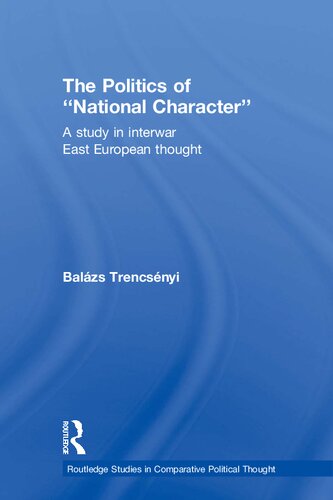

Most ebook files are in PDF format, so you can easily read them using various software such as Foxit Reader or directly on the Google Chrome browser.
Some ebook files are released by publishers in other formats such as .awz, .mobi, .epub, .fb2, etc. You may need to install specific software to read these formats on mobile/PC, such as Calibre.
Please read the tutorial at this link: https://ebookbell.com/faq
We offer FREE conversion to the popular formats you request; however, this may take some time. Therefore, right after payment, please email us, and we will try to provide the service as quickly as possible.
For some exceptional file formats or broken links (if any), please refrain from opening any disputes. Instead, email us first, and we will try to assist within a maximum of 6 hours.
EbookBell Team

4.7
46 reviewsThe book is a comparative analysis of the ideological constructions of national specificity in Romania, Bulgaria, and Hungary. Studying the growing infatuation with "national essence" it seeks to understand the radicalization of nationalism in East Central Europe in connection with the shift of the notions of historicity and temporality.
Trencsényi provides a contextual analysis of the symbolic resources and available ideological references that were used for creating these discourses in the respective countries. While focusing on the interwar period when these conceptions became central to the political debate, he also reconstructs the long-term historical evolution of the discourse of ‘national characterology’. Through this prism the work offers a contextual reconstruction of the main debates of these elites on national identity from the mid-19th century until 1945. In the light of the three case studies, the volume contributes to discussions of the problem of modernism and anti-modernism in twentieth-century political thought, posing the question of the intellectual responsibility of intellectuals in constructing radical ideological frameworks.
This book offers a broad intellectual panorama, discerning the common regional features as well as the considerable divergence between these three cases, while also placing them into a wider European intellectual framework of the emergence of radical nationalism.